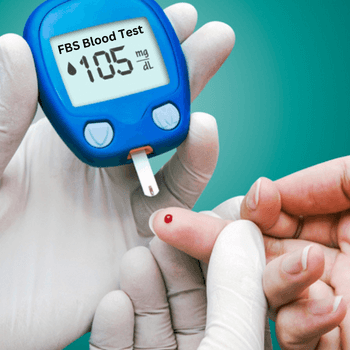What is a Complete Blood Count (CBC) with ESR Test?
A Complete Blood Count (CBC) with Erythrocyte Sedimentation Rate (ESR) test is a comprehensive blood test used to assess several parameters in the blood. The CBC measures the quantity, size, and maturation of various blood cells within a specified blood volume. This test is integral for diagnosing and monitoring numerous health issues, making it one of the most frequently performed medical tests.
The test involves collecting a blood sample, which is then analysed to determine the counts and physical characteristics of red blood cells (RBCs), white blood cells (WBCs), and platelets. Additionally, the test also assesses haemoglobin levels and various other parameters.
The ESR component of the test also measures how quickly red blood cells settle at the bottom of a test tube over one hour. During inflammation in the body, the red blood cells tend to clump together and settle more rapidly.
Therefore, CBC and ESR tests help identify inflammatory conditions, autoimmune diseases, anaemia, infections, and certain types of cancers. Combining CBC and ESR testing provides a comprehensive view of a patient’s haematological and inflammatory status, aiding in the diagnosis and monitoring of various acute and chronic medical conditions.\
| arameter | Biological Reference | Interpretation |
|---|---|---|
| Red Blood Cells (RBC) Count | 4.5-5.5 mill/mm³ | High levels are observed in anaemia, heart disease, or iron deficiency. Low levels are observed in dehydration, heart disease, or polycythaemia. |
| Haemoglobin (Hb) | 13.0-17.0 g/dL | |
| Haematocrit (HCT)/ Packed Cell Volume (PCV) | 40-50% | |
| Mean Corpuscular Volume (MCV) | 83-101fL | |
| Mean Corpuscular Haemoglobin (MCH) | 27-32pg | |
| Mean Corpuscular Haemoglobin Concentration (MCHC) | 31.5-34.5g/dL | |
| Red Cell Distribution Width (RDW) CV | 11.6-14.0% | |
| Mentzer Index | Beta Thalassemia trait: < 14 Iron deficiency anaemia: >= 14 | A high index indicates iron deficiency. A low index indicates thalassemia. |
| Sehgal Index | Beta Thalassemia trait: < 972 Iron deficiency anaemia: >= 972 | |
| Total White Blood Cell Count (TC) | 4000-10000 cells/mm³ | High levels may indicate an autoimmune disorder, bone marrow disorder, or cancer. Low levels may occur in infection, inflammation, or a reaction to medication. |
| Differential Count | ||
| Neutrophils | 40-80% | |
| Lymphocytes | 20-40% | |
| Monocytes | 2-10% | |
| Eosinophils | 1-6% | |
| Basophils | 0-2% | |
| Absolute Neutrophil Count (ANC) | 2000-7000/mm³ | |
| Absolute Lymphocyte Count (ALC) | 10000-3000/mm³ | |
| Absolute Monocyte Count (AMC) | 200-1000/mm³ | |
| Absolute Eosinophil Count (AEC) | 20-500/mm³ | |
| Absolute Basophil Count (ABC) | 0-100/mm³ | |
| Neutrophil Lymphocyte Ratio (NLR) | 1.0-3.0 | High NLR suggests inflammation 6 |
| Platelet Count | 150-450 (10^3/μL) | Platelets rise in autoimmune disorders or certain infections. Low platelet count is observed in inflammatory conditions or bone marrow disorders. |
| Platelet Hematocrit | 0.20-0.50% | |
| Mean Platelet Volume (MPV) | 7-13dL | |
| Erythrocyte Sedimentation Rate (ESR) | 01-10mm/h | ESR is high in anaemia, Cancers such as lymphoma or multiple myeloma, thyroid disease, pregnancy, and autoimmune disorders. ESR is low in Polycythaemia, sickle cell anaemia, congestive heart failure, Leukaemia, Low plasma protein |








Reviews
There are no reviews yet.